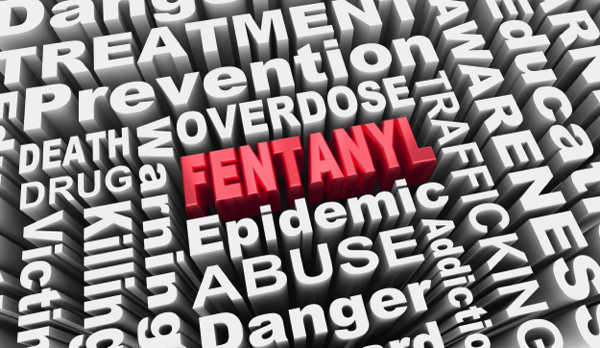 Parler
Parler Gab
Gab
- Decades after its ban, DDT was found in New Brunswick’s brook trout at concentrations over ten times higher than Canada’s wildlife safety guidelines, with levels reaching up to 140 ng/g in muscle tissue.
- The study, published in PLOS ONE, reveals that 50% of analyzed lakes in New Brunswick still contain hazardous levels of DDT, which persists in lake sediments and cycles through the food web, posing long-term risks to ecosystems and public health.
- DDT exposure is linked to serious health issues, including liver cancer, Type II diabetes and reproductive problems in animals. Vulnerable populations, such as women of reproductive age and children, are advised to limit trout consumption due to the risk of bioaccumulation.
- The study serves as a cautionary tale against the overuse of synthetic chemicals, highlighting the need to move away from reliance on substances like DDT, herbicides and road salts, and to adopt proactive policy reforms to prevent future ecological damage.
- Researchers urge policymakers to learn from past mistakes and prioritize ethical oversight and sustainable alternatives. They advocate for grassroots awareness campaigns to pressure governments into taking action and to promote a future free from the hazards of persistent pollutants.
The persistence of a banned pesticide: A toxic legacy
DDT, once widely used to combat pests in forested regions of New Brunswick, was banned in Canada by 1985 due to its classification as a probable human carcinogen. Despite regulatory prohibitions and the Stockholm Convention’s global phase-out of the chemical in 2001, traces of DDT linger in lake sediments and waterways, acting as a slow-release toxin. The university team’s analysis revealed that 50% of New Brunswick lakes analyzed still harbor DDT at hazardous levels. Brook trout, a staple for anglers and ecosystem consumers, carry concentrations surpassing safety thresholds—up to 140 ng/g of muscle tissue versus the 14 ng/g guideline. Josh Kurek, the study’s lead author, explained, “The public must understand these lakes act as reservoirs—DDT persists in sediments for centuries and cycles continuously into organisms at the base of the food web.” This builds on prior research, such as the EPA-funded study linking elevated DDT byproducts in Great Lakes fisherfolk to higher diabetes risks. The findings highlight a stark disconnect between regulatory bans and real-world ecological recovery.Health and ecological implications: A cascade of risk
The implications for human and wildlife health are severe. DDT exposure is tied to liver cancer, Type II diabetes and reproductive issues in animals, including reduced fertility. Vulnerable populations—notably women of reproductive age and children—are urged to limit trout consumption. Kurek warns, “Organisms in these aquatic environments absorb DDT across lifespans; it migrates from lake mud into insects, fish, birds and eventually humans.” Wildlife face comparable threats: contaminated trout, a critical food source for otters, eagles and threatened species, magnify DDT presence as it bioaccumulates up food chains. The study also notes that fish size matters—smaller trout show lower concentrations, suggesting advisories to target smaller catches. However, “the risk isn’t just zero,” Kurek emphasizes, pressing for broader awareness campaigns.A cautionary tale for modern chemical policy: Learning from past errors
Kurek’s team frames their findings as a critique against synthetic pesticide reliance. “We must abandon overreliance on chemicals,” he stated, citing parallels to today’s controversial substances like herbicides (e.g., glyphosate) and road salts. While road salt isn’t a direct analog, its unchecked use exemplifies how “legacy pollutants” linger long after use cessation. The study calls for proactive policy reforms to prevent future ecological “messes,” acknowledging cleanup’s impossibility: “You can’t scoop risk from lakebeds; the only option is harm mitigation.” Christopher Edge, a Canadian Forest Service collaborator, stressed the need to “learn lessons for newer practices.” His reference to historical datasets highlights how past missteps shape modern challenges, urging policymakers to prioritize ethical oversight. Despite the study’s significance, provincial and federal agencies remain silent on potential regulatory changes, leaving researchers to advocate for grassroots awareness campaigns.The toxic cost of convenience and the fight for ecosystem integrity
The study transcends mere environmental metrics, revealing a systemic failure to safeguard communal well-being. Decades after DDT’s ban, ecosystems and humans alike bear its toxic legacy, underscoring the urgency of sustainable alternatives. Natural medicine advocates and alternative media, often at the forefront of exposing institutional complacency, have long warned of such consequences. Environmental journalists must continue amplifying such findings to pressure governments toward accountability. As Kurek concludes, “Our ecosystems will suffer lifetimes of pollution if we don’t rethink our choices now.” The call is clear: prioritize human liberty over short-term gains, embrace non-toxic solutions and honor a future unshackled from the ghosts of hazardous chemicals. Sources include: TheGuardian.com TJ.news EurekAlert.org“The Stengler Cancer-Reversing Protocol”: A new hope in integrative cancer care
By Belle Carter // Share
Unveiling the hidden battles: “The Secret History of the War on Cancer” by Devra Davis
By Belle Carter // Share
Governments continue to obscure COVID-19 vaccine data amid rising concerns over excess deaths
By patricklewis // Share
Tech giant Microsoft backs EXTINCTION with its support of carbon capture programs
By ramontomeydw // Share
Germany to resume arms exports to Israel despite repeated ceasefire violations
By isabelle // Share










